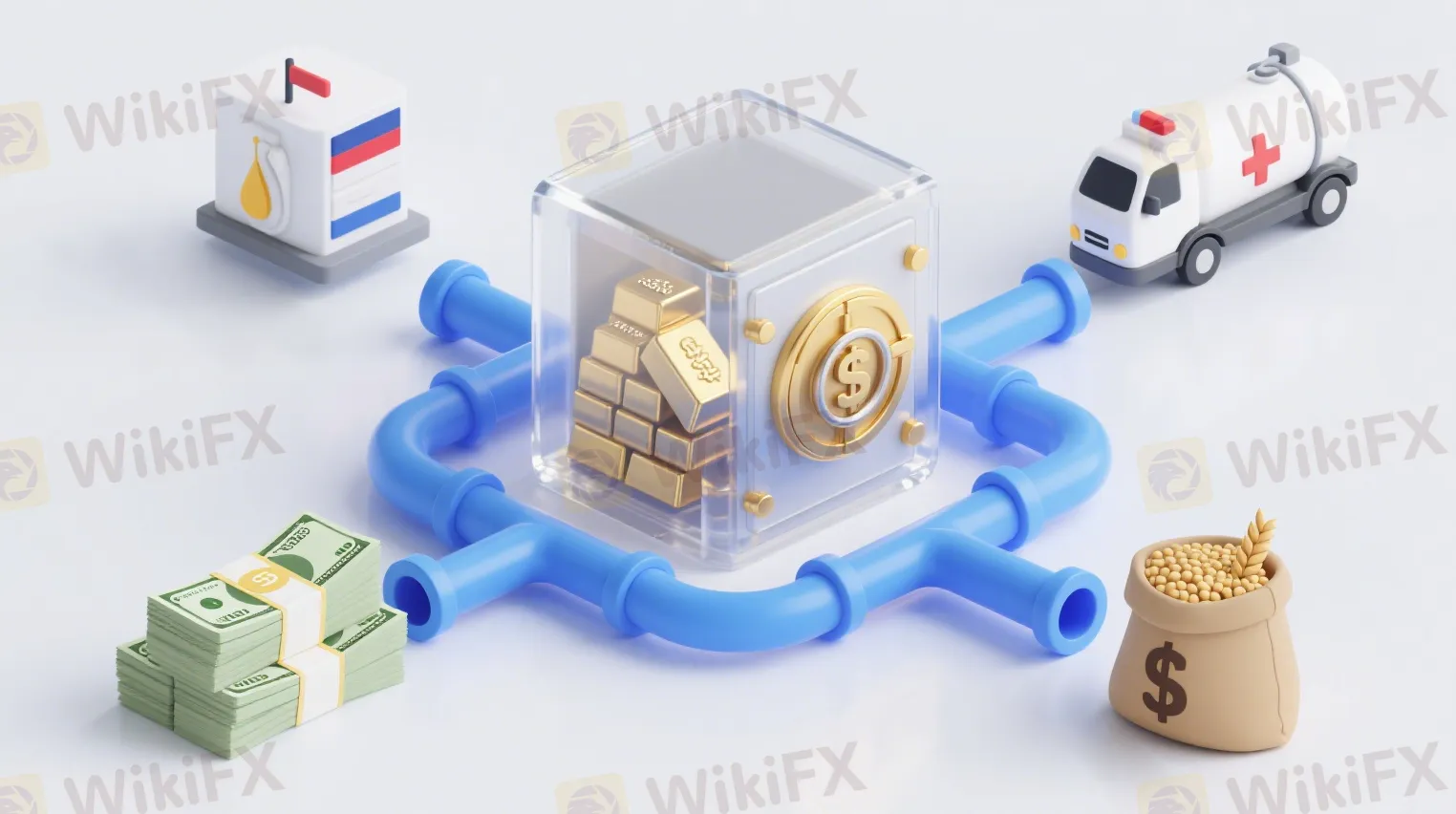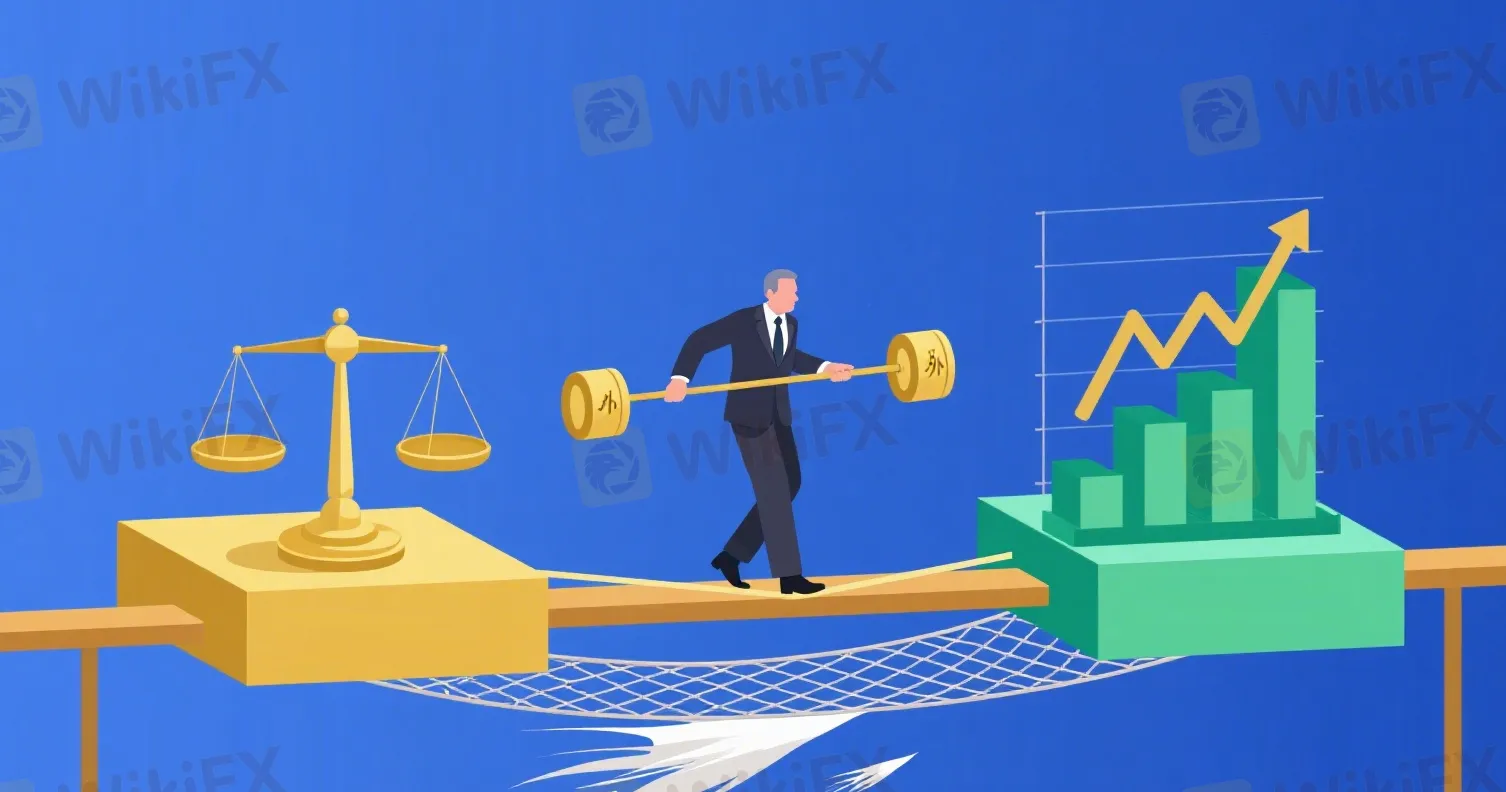简体中文
繁體中文
English
Pусский
日本語
ภาษาไทย
Tiếng Việt
Bahasa Indonesia
Español
हिन्दी
Filippiiniläinen
Français
Deutsch
Português
Türkçe
한국어
العربية
What Is a Forex Reserve? The Ultimate Guide to Global Economic Stability
Abstract: From our exploration, it's clear that forex reserves are far more than a simple entry on a central bank's balance sheet. They are the fundamental toolkit for ensuring economic stability in a deeply connected world. They empower a nation to manage its currency, guarantee its ability to pay for essential imports, service its debts, and weather unpredictable economic storms. A healthy reserve level is the foundation of investor confidence and a symbol of a country's economic independence. While the future may bring shifts in what makes up a reserve asset—with a slow diversification away from the dollar and the potential rise of digital currencies—their core purpose will remain unchanged. As long as we live in a globalized economy, forex reserves will continue to be the ultimate financial backstop. They are the silent guardian of national economic stability.
Have you ever read a headline about a country's “dwindling reserves” and wondered why it's front-page news? This economic concept affects our daily lives. It influences everything from smartphone prices to gas costs. The stability of entire nations depends on this one financial metric.
So what is a forex reserve? Simply put, forex reserves are assets like foreign currencies, gold, and other securities held by a country's central bank. Think of them as the nation's savings account for the global economy.
In this guide, we'll start with the basic definition of these reserves. Then we'll explore their critical functions. We'll look at who holds the largest stockpiles and how they're used to steer national economies. Finally, we'll examine what the future holds for these trillions of dollars that support global financial stability.
Deconstructing Forex Reserves
To understand the power of foreign exchange reserves, we need to look inside the vault first. These aren't just piles of cash. They're a carefully managed portfolio of assets, each with a specific purpose. Understanding what is forex reserve means knowing its different parts. Together, these components form a nation's primary defense in the international financial system.
More Than Just Cash
A country's reserves are a diverse collection of highly liquid, stable assets. The composition is strategic. It's designed to provide stability and quick access during emergencies. Here are the primary components.
| Component | Description | Example |
| Foreign Currencies | The largest part of reserves. These are held in major, stable currencies called “hard currencies.” They're used for international transactions. | U.S. Dollar (USD), Euro (EUR), Japanese Yen (JPY), British Pound (GBP), Chinese Yuan (CNY) |
| Gold | The traditional “safe-haven” asset. Gold holds its value during inflation and uncertain times. It protects against currency losing value. | Gold bars stored in secure vaults either at home or in international centers like New York, London, or Zurich. |
| Special Drawing Rights (SDRs) | An international reserve asset created by the International Monetary Fund (IMF). Its value comes from five major currencies. It acts as a claim on other IMF members' currencies. | A country can exchange its SDRs for hard currency with another IMF member country. |
| Reserve Position in the IMF | This represents a member country's emergency fund at the IMF. Countries can access this money very quickly without conditions. | Funds a member country can get from the IMF to address payment problems. |
| Other Securities | Highly liquid debt instruments issued by foreign governments. These are typically short-term bonds that can be sold quickly without losing much value. | U.S. Treasury Bills, German Bunds, UK Gilts. |
Who Manages The Hoard
Central banks manage these vast assets. Institutions like the U.S. Federal Reserve, the European Central Bank, the People's Bank of China, and the Reserve Bank of India act as guardians of their country's forex reserves.
Their management follows three main goals in order of importance: safety, liquidity, and return. Safety ensures the money is protected. Liquidity ensures the assets can be turned into cash quickly to meet obligations. Only after meeting these two conditions does the central bank try to earn returns on the portfolio.

The Functions of Reserves
Why do countries accumulate trillions of dollars' worth of these assets? Holding forex reserves isn't about showing off. It's a fundamental part of modern economic management. These reserves serve multiple purposes. They help countries navigate the often-turbulent global economy. They're a nation's financial shield, a source of quick cash, and a symbol of credibility on the world stage.
Five Key Reasons
Here are the five critical functions that forex reserves perform for a national economy.
- To Manage Currency Value
- A central bank can directly step into the foreign exchange market to influence its currency's value. This is perhaps the most powerful and visible use of reserves. If a country's currency is weakening too quickly, which can cause inflation, the central bank can sell its foreign currency reserves (like USD) to buy its own currency. This increased demand strengthens the local currency. On the flip side, it can sell its own currency to buy foreign currency. This weakens the exchange rate to make exports cheaper.
- To Maintain Trade Liquidity
- International trade rarely happens in a country's local currency. Major goods like oil and high-tech products like computer chips are typically priced and paid for in U.S. dollars. Forex reserves ensure that a country has the necessary hard currency to pay for imports and meet international payment obligations smoothly. Without enough reserves, a country could face a crisis where it can't import essential goods.
- To Service Foreign Debt
- Governments and corporations often find it cheaper or easier to borrow money from international markets in foreign currencies, mainly the U.S. dollar. Forex reserves are essential to make required interest and principal payments on this external debt. Failing to service this debt can lead to a sovereign default. This is a catastrophic event with severe economic consequences.
- To Act as an Economic Buffer
- Reserves are a nation's ultimate safety net. They provide a crucial cushion during unexpected economic shocks. These could include a sudden stop in foreign investment, a collapse in the price of a key export, or a natural disaster that damages the economy. In such crises, reserves can stabilize the currency and finance essential imports. This gives policymakers time to address the underlying problems.
- To Boost Confidence and Credibility
- A large stock of reserves sends a powerful signal to international investors, credit rating agencies, and other governments. It shows that the country is economically stable, well-managed, and capable of meeting its financial obligations. This confidence makes it easier and cheaper for the country to attract foreign investment and borrow from international markets. This creates a positive cycle of growth.
Who Holds the Keys?
The global distribution of forex reserves is far from even. A handful of nations, mainly major exporting economies, hold a disproportionately large share of the world's total reserves. Understanding who these players are and why they've accumulated such vast sums provides critical insight into the global economy's structure. The data, primarily compiled by the International Monetary Fund, reveals a landscape dominated by a few economic giants.
The Global Top 5
The league table of reserve holders reflects global trade and money flows over the past few decades. Export-heavy nations that consistently sell more than they buy naturally accumulate large amounts of foreign currency.
| Rank | Country | Estimated Reserves (2024 Data) | Primary Reason for High Reserves |
| 1 | China | ~$3.4 Trillion | Decades of massive trade surpluses and active currency management to support its export-led growth model. |
| 2 | Japan | ~$1.3 Trillion | A history as a major exporter of high-value goods and the yen's status as a global safe-haven currency. |
| 3 | Switzerland | ~$900 Billion | A major financial hub and the Swiss franc's role as a premier safe-haven asset, attracting money during global uncertainty. |
| 4 | India | ~$650 Billion | A strategic buffer built to protect against volatile money flows, cover a large import bill, and project economic stability. |
| 5 | Russia | ~$600 Billion | Primarily from revenues generated by vast oil and natural gas exports, and strategic accumulation as part of “de-dollarization” efforts. |
Note: Figures are approximate and change based on market valuation and central bank actions. Source: IMF and respective central bank data.
What “Adequate” Means
There's no single magic number that defines an “adequate” level of reserves. The right amount depends on a country's specific circumstances. This includes its exchange rate system, the volume of its international trade, and its vulnerability to money fleeing the country.
However, economists use several metrics to gauge reserve adequacy. One common benchmark is the Greenspan-Guidotti rule. This suggests a country should hold enough reserves to cover all its short-term external debt (debt due within one year). Another popular metric is “import cover.” This measures how many months of imports the reserves could finance. A standard rule of thumb is to hold at least three to six months of import cover.
The Balancing Act
Central banks don't just passively hold reserves. They actively use them as a primary tool of monetary policy. The most direct application is stepping into the foreign exchange market to manage the nation's currency value. This is a delicate balancing act. A currency that's too weak can trigger inflation. One that's too strong can hurt exporters and slow economic growth. Understanding this intervention mechanism is key to grasping the practical power of forex reserves.

The Toolkit: Strengthening
Let's consider a scenario where a country's local currency, the “LC,” is falling rapidly against the U.S. dollar.
- The Problem: The falling LC makes imported goods more expensive for citizens, leading to rising inflation. It also signals economic instability, which could scare away foreign investors.
- The Action: The country's central bank decides to step in. It accesses its forex reserves and starts an operation in the open market.
- The Mechanism: The central bank sells a portion of its U.S. dollar reserves. With the money from that sale, it simultaneously buys its own local currency (LC).
- The Result: This action directly increases the demand for the LC in the market. According to basic supply and demand laws, this increased demand puts upward pressure on the LC's value. This causes it to strengthen (or at least stabilize) against the U.S. dollar.
The Toolkit: Weakening
Now, let's look at the opposite scenario. The local currency (LC) has become too strong, making the country's exports expensive and uncompetitive on the global market.
- The Problem: A strong LC hurts the nation's export sector, which can lead to job losses and slower economic growth. Major exporters like China and Japan have historically faced this issue.
- The Action: The central bank decides that a weaker currency is needed to support its exporters. It again steps into the market.
- The Mechanism: In this case, the central bank essentially prints new local currency. It then uses this newly created LC to buy U.S. dollars on the open market. These purchased dollars are then added to its forex reserves.
- The Result: This action increases the supply of the LC in the financial system. An oversupply of the currency causes its value to fall, or weaken, relative to other currencies like the USD. This makes the country's goods cheaper for foreign buyers, boosting exports. This process also explains how export-led economies accumulate massive reserves in the first place.
Case Study: China
No discussion of forex reserves is complete without examining China. The story of China's “Great Wall of Reserves” is a masterclass in the strategic use, benefits, and challenges of accumulating the world's largest financial hoard. For decades, China's reserve management has been a central pillar of its economic miracle. But it has also created a unique set of complex problems.

Rise of the Hoard
Following its entry into the World Trade Organization in 2001, China's economy transformed into the world's factory. Its export-led growth model generated a massive and continuous inflow of foreign currency, primarily U.S. dollars. In the early 2000s, China's reserves were a modest $200 billion. By its peak in 2014, this figure had skyrocketed to nearly $4 trillion.
This wasn't a passive accumulation. The People's Bank of China (PBOC) systematically stepped into the market. As dollars flooded in from export sales, the PBOC bought them up by printing yuan. This action served two purposes. It prevented the Chinese yuan from getting stronger too quickly, which kept Chinese exports cheap and competitive. It also built up an unprecedented stockpile of forex reserves.
Armor and Clout
This massive hoard provided China with immense benefits.
- Economic Armor: During the 2008 Global Financial Crisis, which damaged Western economies, China was largely protected. Its vast reserves acted as an impenetrable shield, ensuring stability and allowing it to launch a massive domestic stimulus program that kept its economy growing.
- Global Clout: As the largest foreign holder of U.S. Treasury securities, China gained significant geopolitical leverage. While the idea of China “dumping” its U.S. debt is oversimplified, its position as America's largest banker gives it a powerful voice in global financial discussions.
- Strategic Investment: The reserves have provided the money for ambitious global initiatives. China has used a portion of this wealth to fund its Belt and Road Initiative, a massive infrastructure project spanning continents. It has also established institutions like the Asian Infrastructure Investment Bank (AIIB), projecting its economic power across the globe.
The “Burden” of Billions
However, managing trillions of dollars is a double-edged sword and presents significant challenges.
- Sterilization Costs: When the PBOC prints yuan to buy incoming dollars, it risks flooding its domestic economy with cash. This can cause runaway inflation. To counteract this, it must “sterilize” the inflow by selling bonds to commercial banks to soak up the excess money. This process is complex and can be costly for the central bank.
- Concentration Risk: With most of its reserves held in U.S. dollar-denominated assets, China is heavily exposed to U.S. fiscal and monetary policies. A sharp, sustained decline in the U.S. dollar's value would significantly reduce the value of China's national savings.
- Low Returns: The primary objective for reserve management is safety. This means investing in ultra-safe assets like U.S. Treasury bonds. However, these assets offer very low returns. This represents a massive opportunity cost. Trillions of dollars are locked up in low-yielding securities instead of being invested in higher-return domestic projects like healthcare or education.
The Future of Reserves
The global reserve landscape, long dominated by the U.S. dollar, is slowly but steadily evolving. Political shifts, technological advances, and a desire for greater monetary independence are prompting central banks worldwide to rethink their reserve management strategies. While the dollar's reign is far from over, we're witnessing the emergence of a more multipolar currency system.
The “De-Dollarization” Trend
For several years, a quiet but deliberate trend of “de-dollarization” has been underway. Countries like China and Russia, motivated by political rivalry with the U.S., are actively seeking to reduce their dependence on the dollar. This move is also a practical risk management strategy to diversify away from concentration in a single currency.
Data from the IMF's Currency Composition of Official Foreign Reserves (COFER) survey confirms this shift. In the early 2000s, the U.S. dollar accounted for over 70% of allocated global reserves. Today, that share has fallen to below 60%. Central banks are gradually increasing their holdings of other currencies, most notably the Euro and, to a lesser but growing extent, the Chinese Yuan.
Gold's Resurgence
The oldest reserve asset is enjoying a modern comeback. In recent years, central banks, particularly in emerging markets like China, India, and Turkey, have been significant net buyers of gold. This renewed interest is driven by a desire to hedge against rising political uncertainty, persistent inflation, and the volatility of paper currencies. Gold, which carries no counterparty risk, is seen as the ultimate safe haven in a turbulent world.
Digital Disruption?
The most profound potential change on the horizon is the rise of Central Bank Digital Currencies (CBDCs). China is at the forefront with its ongoing pilot of the digital yuan (e-CNY). The question is no longer if, but when and how, these digital currencies might be incorporated into global reserves.
A digital currency could offer benefits like increased transaction efficiency and the ability to bypass traditional financial systems. However, it also raises complex questions about security, privacy, and control that haven't been fully answered yet. The potential for a digital currency to one day challenge the dollar's supremacy in international trade and reserves is a key dynamic to watch in the coming decade.
Conclusion: Enduring Importance
From our exploration, it's clear that forex reserves are far more than a simple entry on a central bank's balance sheet. They are the fundamental toolkit for ensuring economic stability in a deeply connected world. They empower a nation to manage its currency, guarantee its ability to pay for essential imports, service its debts, and weather unpredictable economic storms. A healthy reserve level is the foundation of investor confidence and a symbol of a country's economic independence.
While the future may bring shifts in what makes up a reserve asset—with a slow diversification away from the dollar and the potential rise of digital currencies—their core purpose will remain unchanged. As long as we live in a globalized economy, forex reserves will continue to be the ultimate financial backstop. They are the silent guardian of national economic stability.
Disclaimer:
The views in this article only represent the author's personal views, and do not constitute investment advice on this platform. This platform does not guarantee the accuracy, completeness and timeliness of the information in the article, and will not be liable for any loss caused by the use of or reliance on the information in the article.
Read more

Check Yourself: The Costly Trading Habits Every Trader Must Fix
Are the trading habits you barely notice the very ones quietly destroying your profits, and could a single overlooked mistake be costing you far more than you realise?

Valetax vs Taebank Markets — Which Broker Should You Choose?
This article is about the two brokers, Valetax and Taebank Markets.

Voices of the Golden Insight Award Jury | Kazuaki Takabatake, CCO of Titan FX
WikiFX Golden Insight Award uniting industry forces to build a safe and healthy forex ecosystem, driving industry innovation and sustainable development, launches a new feature series — “Voices of the Golden Insight Awards Jury.” Through in-depth conversations with distinguished judges, this series explores the evolving landscape of the forex industry and the shared mission to promote innovation, ethics, and sustainability.

Voices of the Golden Insight Award Jury | George Georgiou, the Co-Founder of Dynamic Works
WikiFX Golden Insight Award uniting industry forces to build a safe and healthy forex ecosystem, driving industry innovation and sustainable development, launches a new feature series — “Voices of the Golden Insight Awards Jury.” Through in-depth conversations with distinguished judges, this series explores the evolving landscape of the forex industry and the shared mission to promote innovation, ethics, and sustainability.
WikiFX Broker
Latest News
Gratitude Beyond Borders: WikiFX Thank You This Thanksgiving
KEY TO MARKETS Review: Are Traders Facing Withdrawal Delays, Deposit Issues & Trade Manipulation?
FCA Consumer Warning – FCA Warning List 2025
Zipphy Exposed: No Valid Regulation, Risk Warning
Australia’s Fraud-Intel Network Exposes $60M in Scams
Is Purple Trading a Scam? Honest User Reviews Reveal the Truth
Kraken Review: A Tale of Unsolved Withdrawal Issues & Poor Customer Support Service
KKR Exposed: Traders Allege Fund Scams, Withdrawal Denials & Regulatory Concerns
IG Launches 5% Cashback Offer for New UK Customers
Forex Trading During Pakistan Market Hours: Best Time to Trade
Currency Calculator



